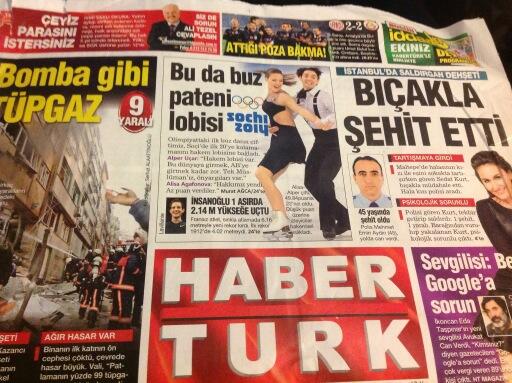Berkin Elvan
Chibok
Soma
Uğur Kurt
Mosul
Gaza
Sinjar
Donetsk
Ferguson
Kobani
Iguala
... and far, far too many more.
May the coming year bring more peace and less heartbreak.
 |
| A peaceful day on the Tigris River in northern Iraq. |
 |
| Peshmerga in repose. |
 |
| Shepherd by the banks of the Tigris. |
 |
| A detail of 'Sakıp Sabancı' (Photo: Sakıp Sabancı Museum) |
 |
| 'Sılsel' at the Galata Greek School in 2012 |
The Altan Şekerleme candy shop was a frequent and favorite stop during my time as a tour guide for Istanbul Eats’ culinary walks, but what happened in the candy-making operation upstairs was always a closely guarded secret. At a recent press event at the Istanbul Culinary Arts Center, however, I finally had the chance to see how those glistening hard candies were made, and to return for a chat with one of the master şekerci (confectioners) carrying on a tradition that dates back, with little change, to Ottoman times.
Read my article for Zester Daily, “Turkish Candy Entices Through the Ages”
 |
| The Maçka Park running track. |
 |
| Nice spot for a meze joint. |
"Looking at things too much celebrated, like views of beautiful cities, is equal to not seeing anything at all. Our brain, as soon as [it] acknowledges the images, doesn't need to work on them."*
I met American expat Tara Hopkins not long after I moved to Istanbul, when she had recently founded Çöp(m)adam, a path-breaking social enterprise that combined women's empowerment with environmental responsibility in a way largely unknown in Turkey. I knew from the start that it was a great story – one that finally found a worthy home this year in the U.S. women's magazine More.
To write the profile of Hopkins and her talented team of "Garbage Ladies," I spent time at their workshop in the seaside town of Ayvalık, hearing heartbreaking and inspiring stories about the women, their families, and their new lives.
Read my article about Çöp(m)adam as it appeared in More magazine's March 2014 issue: “She Turns Trash Into Cash..." (pdf)
 |
| Photo via @aylajean |